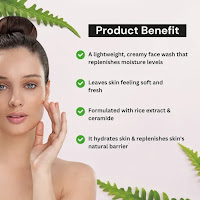Licorice
for Youthful Skin: Natural Anti-Aging and Brightening Benefits Unveiled
Understanding Skin Aging
Skin aging is a complex, natural process influenced by both internal (intrinsic) and external (extrinsic) factors. Over time, these factors lead to visible changes such as wrinkles, fine lines, sagging, dryness, and pigmentation issues. Understanding the science behind skin aging is the first step toward effective prevention and treatment (1, 2).
Intrinsic Aging: This leads to gradual
thinning of the skin, loss of collagen and elastin, and reduced ability to
repair and retain moisture.Results in fine wrinkles, dryness, and a decrease in
skin elasticity.
Extrinsic Aging: Caused by external
factors like UV radiation, smoking, pollution, poor nutrition, and lifestyle
habits. UV exposure is the leading cause, responsible for up to 80% of visible
facial aging. Ultimately, accelerates the breakdown of collagen and elastin,
resulting in deep wrinkles, pigmentation, rough texture, and loss of firmness.
Visible Signs of Skin Aging
Wrinkles and fine lines
Age spots and pigmentation
Dryness and rough texture
These changes can impact not only
physical appearance but also self-esteem and quality of life.
Licorice: The Herbal Solution for Youthful Skin
What is Licorice?
Licorice (Glycyrrhiza species) is a medicinal
root known for its wide-ranging health benefits, including antioxidant,
anti-inflammatory, and skin-brightening properties. Modern research has
spotlighted licorice and its active compounds as powerful ingredients in cosmetic
and anti-aging skincare (3, 4).
How Licorice Benefits Aging Skin
1. Skin Lightening and Brightening
Licorice contains glabridin, a potent
compound that inhibits melanin production, helping to lighten dark spots, treat
hyperpigmentation, and even out skin tone.
Clinical studies show that
licorice-based creams, especially when combined with other ingredients, deliver
excellent skin-whitening and brightening effects.
Ishi et al. reported that licorice
based creams showed excellent skin whitening effects along with stearic acid
cetyl alcohol, and other excipients (3).
At the same time, Kirubakaran et al.
highlighted that a complex formulation of licorice root, G. indica bark
extracts and titanium dioxide inhibit melanin production, resulting in
skin-whitening for better skin (3).
Another study reported that herbal
face cream, in which licorice was combined with other herbal ingredients,
showed multipurpose effects such as whitening, antiwrinkle, anti-aging, and
sunscreen effects (3).
2.
Anti-Wrinkle and Firmness Boost
Licorice is an excellent antioxidants that
neutralize free radicals and reduce the activity of matrix metalloproteinases
(MMPs), enzymes that break down collagen and elastin. Licorice helps maintain
skin structure, reduce wrinkle formation, and improve elasticity (2, 3).
3.
Anti-Inflammatory Action
The compound liquiritin in licorice
soothes inflammation and redness, making it ideal for sensitive or irritated
skin and conditions like eczema or rosacea.
4.
Oil Control and Pore Minimization
Licorice’s mild astringent properties
help balance oil production, minimize enlarged pores, and control sebum,
benefiting oily and combination skin types.
5.
UV Protection and Skin Defense
Licorice-based formulations are often
included in sunscreens and daily SPF products, offering additional protection against
UV-induced skin damage (3, 4).
Why Choose Licorice-Based Skincare?
Multi-benefit:
Licorice addresses multiple aging concerns-wrinkles, pigmentation,
inflammation, and oil control-in one ingredient.
Safe
and effective: Backed by research and widely used in
cosmetic formulations for daily use.
Licorice in Modern Skincare Products
Licorice is now a common ingredient in a wide array of cosmetic formulations, including:
Anti-aging creams and serums
Skin-lightening lotions
SPF products and sunscreens
Cleansers, toners, and face masks
Makeup items like foundations, BB
creams, and primers
Haircare products like shampoos for
sensitive scalp
Final Thoughts: Conclusion
Licorice has emerged as a powerful
herbal-based product in your skincare routine that can help you to achieve
younger, healthier, and more radiant the natural way.
References
(2). Nutritional Dermatology: Optimizing Dietary Choices for Skin Health. Nutrients. 2024.
(3). Licorice (Glycyrrhiza glabra, G. uralensis, and G. inflata) and their constituents as active cosmeceutical ingredients. Cosmetics. 2022.
(4). Glycerolic licorice extracts as active cosmeceutical ingredients: Extraction optimization, chemical characterization, and biological activity. Antioxidants. 2019.



Comments
Post a Comment